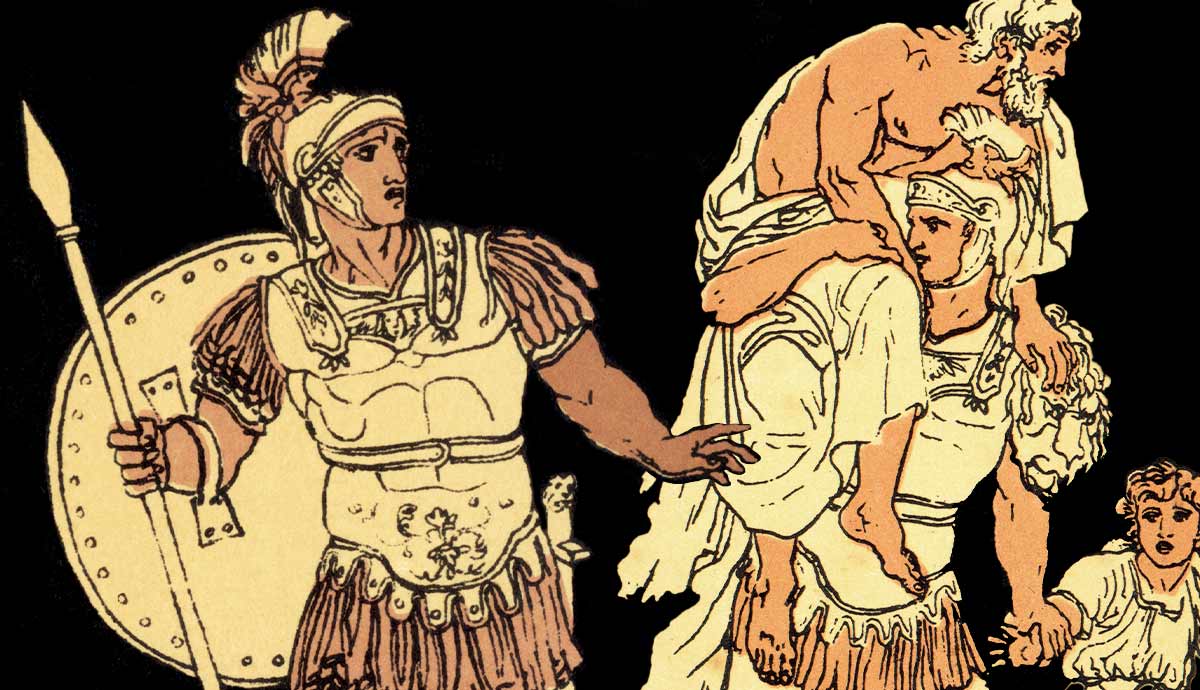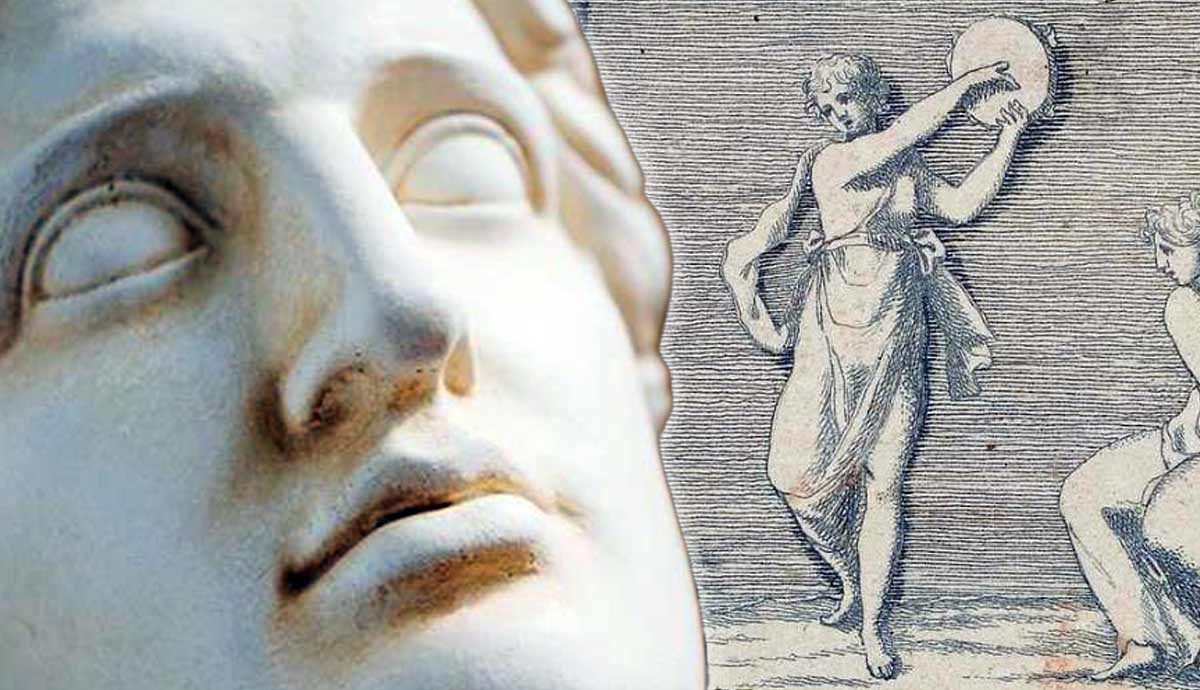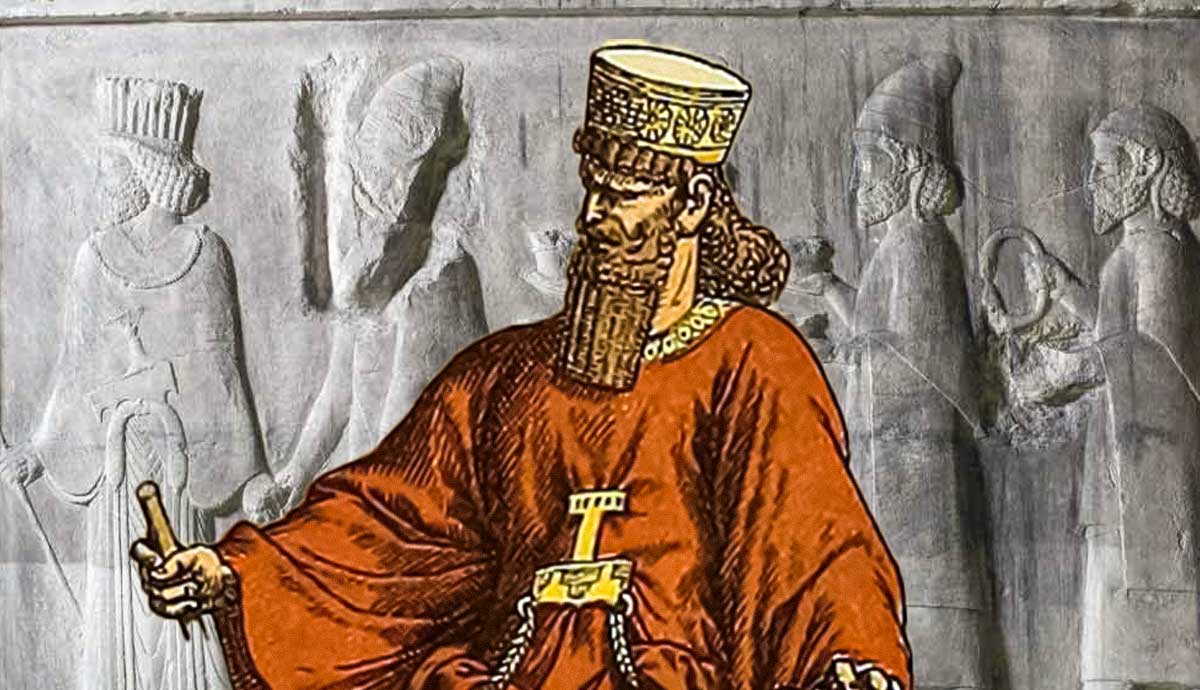
In Greek and Roman legend, Aeneas was a prince of Troy who survived the fall of the city. After the Trojan War, he was said to have traveled to Italy carrying his father on his back. He then married, and his descendants went on to found the city of Rome. What do we know about his family? Who were his parents and his children? What legacy did he leave behind?
Aeneas’s Dynasty

Aeneas was a prince of the famous city of Troy, according to ancient Greek and Roman records. According to records dating back to Homer in the 7th century BCE, this was a relatively recently founded dynasty. It was said to have been founded some six generations before the final king of Troy, King Priam, by two separate arrivals. One was the arrival of Teucer from Crete, and the other was the arrival of Dardanus from Greece (or Italy, depending on the source).
Dardanus married Batea, the daughter of King Teucer, and founded the city of Dardanus. A few generations later came Ilus, son of Tros. It was from Ilus that the recently founded city of Troy took its name, Ilios, while Troy came from Ilus’s father, Tros. Aeneas was the son of Anchises, son of Capys, son of Assaracus, son of Tros. Hence, he was not an heir to the throne of Troy, whose kings descended from Assaracus’ brother, Ilus.

Nevertheless, Aeneas was still an important member of the dynasty. During the Trojan War, Aeneas served as the leader of the Dardanians, the close relatives of the Trojans. Their city, Dardanus, was a few miles northeast of Troy. Aeneas’ grandfather, Capys, was the king of that city during the Trojan War.
Interestingly, Aeneas’ ancestors were said to have had a divine origin. Dardanus’ descendants were partially descended from the gods by virtue of Dardanus’ marriage to Olizone, daughter of Phineus and Cleopatra. The latter was a daughter of Boreas, the god of the north wind, who lived in Thrace. However, this was not the only trace of the gods in Aeneas’ lineage. In fact, Aeneas was a demigod, since he was born from the union of Anchises and the goddess Aphrodite.
Aeneas’s father is most famous for his role in Virgil’s Aeneid, written in the 1st century BCE. In that epic tale, Aeneas carries his elderly father Anchises out of the burning city of Troy.
Ascanius, Aeneas’ Most Famous Son

The sources credit Aeneas with several children. However, by far his most famous child is Ascanius. He was born to Aeneas by Creusa, a princess of Troy, the daughter of King Priam. According to Virgil’s Aeneid, Ascanius was a young child when Aeneas took his father from the city. Ascanius, of course, was brought with them. However, there are some versions of the legend in which Ascanius was born after the Trojan War. The Roman historian Livy in the 1st century BCE recorded one such example, saying that he was the son of Aeneas by Lavinia of Latium in Italy.
Virgil recorded that Ascanius was also known by the name Iulus. It was from Iulus that the Roman family, of which Julius Caesar was a member, descended. Naturally, this gave the Roman emperors a profound interest in Ascanius and his father Aeneas. According to Dionysius of Halicarnassus, also in the 1st century BCE, Iulus was actually the son of Ascanius. In either case, Ascanius was viewed as the ancestor of the Julii.
Other Children of Aeneas

Ascanius was not the only child that Aeneas was said to have had, nor is he the one who appears in the earliest records. In fact, the earliest record about Aeneas’s descendants is actually Homer’s Iliad. In a passage in which Poseidon saves Aeneas from being killed by Achilles, the god declares that Aeneas needs to be saved due to his future. He explains that he will go on to become the king of the Trojans in the future, after Troy falls. Not only that, but his sons and grandsons are said to be destined to rule the Trojans after him.
Homer never explains how this prophecy is to be fulfilled. Its fulfilment is borne out by later texts. In the 5th century BCE, Hellanicus of Lesbos and Damastes of Siguem wrote that Aeneas, together with Odysseus, founded Rome. In the 4th or 3rd century BCE, a writer named Alcimus stated that Aeneas had a son named Romulus and a grandson named Rhomus.

In the late 3rd century BCE, a historian named Cephalon of Gergis recorded a similar tradition. He referred to a son of Aeneas named Romus. According to Dionysius of Halicarnassus, a historian of the 1st century BCE, many other historians agreed with this version. He specifically mentions Demagoras and Agathyllus among the many who agreed that Aeneas had a son named Romus. At least one surviving tradition referred to Aeneas as having two sons named Romulus and Romus. By comparing these different traditions about Aeneas’ children, it seems very likely that these two are just alternate expressions of the same original figure. It also seems likely that the Romus of this tradition was transformed into Remus, hence explaining the brothers Romulus and Remus in later tradition.
Aeneas was also credited with at least one daughter. Plutarch recorded a tradition that Romulus was the grandson of Aeneas through a daughter named Aemilia. She was said to be the daughter of Aeneas’s wife, Lavinia.
Aeneas’ Legacy in Rome

It hardly needs to be explained that Romulus, or Romus, was viewed as the eponymous founder of Rome. His very name gives that away. This is also consistent with the even earlier tradition that Aeneas himself had founded Rome.
In later tradition, particularly from the 1st century BCE onwards, Aeneas was considered the founder of the city of Lavinium after he became king of the Latins. After this, his son Ascanius took many of the Latins and founded the city of Alba Longa. In this later version, Romulus (or Romus) was not the direct son of Aeneas. Rather, he was a much later descendant, born centuries after Aeneas’ reign. He and his brother, Remus, were said to have founded Rome after being driven out of Alba Longa as infants.
Aeneas’ legacy in connection to Rome is especially famous through the Aeneid, written by Virgil in the 1st century BCE. This was commissioned by Augustus Caesar, the first Roman emperor.

This has led to the misconception that Virgil invented the Trojan connection to Rome in order to give the Romans a glorified past, connected to Greek mythology. As we have seen, this is far from the truth. In fact, Virgil actually made the Roman connection to the Trojans much less direct than it had been in the earlier traditions. Rather than Rome being founded by Aeneas himself or one of his early descendants, Virgil’s account placed many centuries between Aeneas and Rome. However, it was not Virgil himself who invented this less direct connection. The contemporary Roman historian Livy also mentioned it. It appears that it emerged as a result of attempts to reconcile the traditional date of the Trojan War, 1184 BCE, with the traditional date of Rome’s founding, 753 BCE.
Nevertheless, the Romans would continue to honor Aeneas as an important figure in their history. Virgil’s Aeneid, despite describing a less direct connection between the Trojans and the Romans, would prove to be extremely popular. In fact, it has remained popular right up until the present time, just like the Iliad.
The Legacy of the Family of Aeneas

In conclusion, what can we say about Aeneas’ parents, his children, and his legacy? We have seen that Aeneas was a Trojan prince, the grandson of King Capys of Dardanus. His father, Anchises, was the lover of Aphrodite. Hence, Aeneas was a demigod. On his father’s side, he had divine blood by virtue of Dardanus’ marriage to Olizone, granddaughter of Boreas, the god of the north wind. Anchises was famously carried by Aeneas out of the burning ruins of Troy at the climax of the Trojan War. His young son, Ascanius, was also brought with them in some traditions. In these, he was the son of Aeneas by Creusa, daughter of Priam.
In other traditions, Ascanius’ mother was Lavinia, daughter of King Latinus. Early traditions give Aeneas a son variously named Romus or Romulus, and others give him a grandson variously named Rhomus or Romulus. These were surely the same figure originally. Another record gives him a daughter named Aemilia. Aeneas’ legacy is most firmly manifested through his children in the legendary founding of Rome. Virgil’s Aeneid, in particular, firmly established Aeneas’s ongoing legacy as the founder of the Roman nation.










